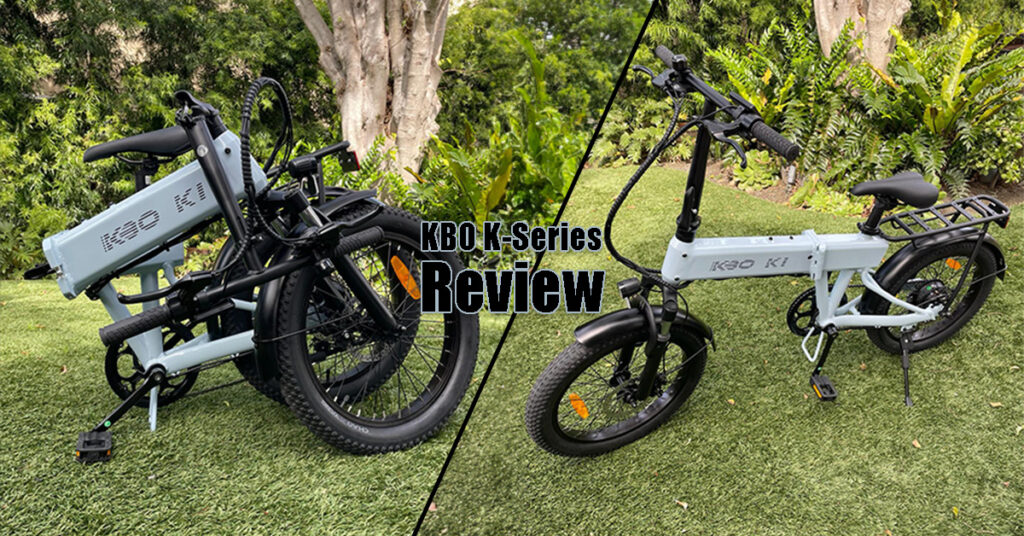E-bikes have come a long way from their humble beginnings. Initially dismissed by many as a fleeting trend, they’ve proved their mettle by melding the tried-and-true mechanics of traditional bicycles with the promise of technology.
The result? A sustainable, efficient, and exhilarating mode of transport that’s taking the world by storm.
But what exactly makes up these marvels of modern mobility? To demystify it, we’ve broken down e-bike components into two distinct sections: those that have stood the test of time, borrowed from their pedal-powered ancestors, and those that are unique innovations of the electric era.
Let’s dive in!
Electric Bike Components Borrowed from Traditional Bicycles

Frame
The soul of any bicycle, the frame is where everything comes together.
E-bikes utilize similar frame designs as traditional bicycles, but often with reinforced materials to handle the additional weight and stress of a motor and battery.
While there are special frames uniquely designed for e-bikes, many are inspired by the classic geometries that have been time-tested over the decades. Materials like aluminum, steel, and carbon fiber each offer unique benefits in terms of weight, strength, and flexibility.
Read more about different e-bike frame designs in our definitive guide.
Wheels and Tires

A bike’s connection to the ground: wheels and tires. They play a pivotal role in ensuring a smooth and safe ride. E-bike wheels come in different sizes and are built robustly to manage the added power and speed.
Tires, on the other hand, often sport a thicker tread for enhanced grip and durability. Often, there are different tires used on city commuter e-bikes and mountain e-bikes.
Brakes
When you add power, you need increased stopping power. E-bike brakes, although similar in design to traditional bike brakes, are crafted to handle greater speeds and heavier loads.

Disc brakes, in particular, have become a favorite among e-bike enthusiasts for their reliability and responsiveness. However, there are different types of disc brakes. In my opinion, hydraulic disc brakes are the best type for electric bikes.
Curious about how different braking systems stack up? Explore our comprehensive guide on e-bike braking systems.
Gearing and Drivetrain
At the heart of any bike’s movement mechanism, the gearing and drivetrain components play a crucial role in determining how efficiently power is transferred from the pedals to the wheels.
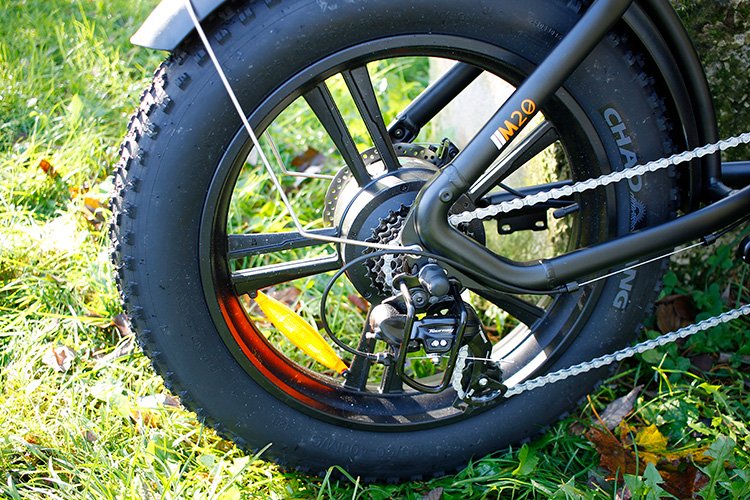
E-bikes, with their added thrust, often employ advanced drivetrain setups for smoother transitions between power levels. However, most cheap electric bikes have the same gearing system as traditional bicycles. Traditional gear ratios, chains, and derailleurs have been adapted to meet these needs.
For a deep dive into the topic, check out our full breakdown of e-bike gearing systems.
Saddle and Seatpost
Comfort is key when cruising, and the saddle and seatpost ensure you can ride for hours without discomfort.
E-bikes often feature ergonomically designed saddles tailored to longer rides and the seated posture of e-bikers. And while seatposts might look simple, they’ve evolved to offer better shock absorption, especially beneficial for e-bike speeds.
However, most ebikes have exactly the same saddles as traditional bicycles.
Handlebars and Stem
Steering and stability start here. Handlebars and stems on e-bikes draw heavily from traditional designs but are tailored to the wider range of e-bike styles.
From the upright handlebars on city cruisers to the aggressive, forward-leaning bars on e-MTBs, each design serves a unique purpose.
Pedals
Pedals play an indispensable role in connecting the rider to the e-bike. While it’s true that thanks to throttle controls some e-bikes can be operated without pedaling, it’s the presence of pedals that classifies them as electric bicycles.
Without pedals, these machines would simply be electric mopeds. Pedals underscore the versatility of e-bikes, offering riders the option to pedal manually and enjoy the traditional cycling experience, engage the motor for assistance, or even coast using motor power alone.
The design and functionality of pedals on e-bikes borrow heavily from their traditional bicycle counterparts, proving that while technology evolves, some foundational elements remain timeless.
Suspensions
The suspension system is an optional component for both e-bikes and traditional bicycles. While the component is not needed for most city bikes, it’s highly anticipated for all-terrain bikes.
The role of the suspension is to absorb shocks and smoothen out the ride, ensuring that bumps, potholes, and rough terrains don’t jolt the rider.
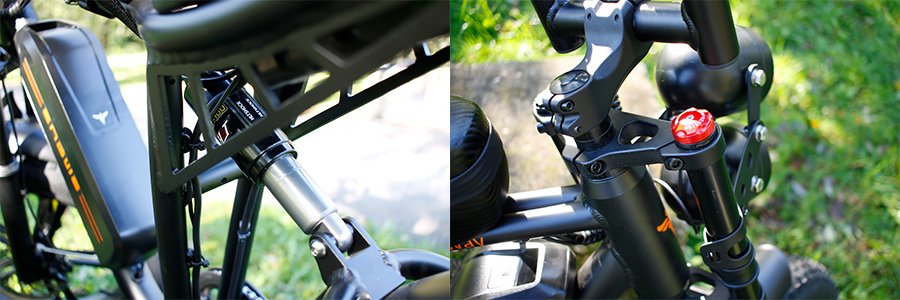
In the realm of e-bikes, the suspension system takes on even greater importance. Given the added weight of the motor and battery, along with the potential for higher speeds, a robust suspension system ensures stability, comfort, and safety.
While e-bikes draw from the tried-and-true suspension designs of traditional bikes, many models incorporate enhanced features to cater to the unique demands of electric cycling.
Read more about e-bike suspensions from our dedicated blog post.
E-Bike Components Unique to Only Electric Bikes
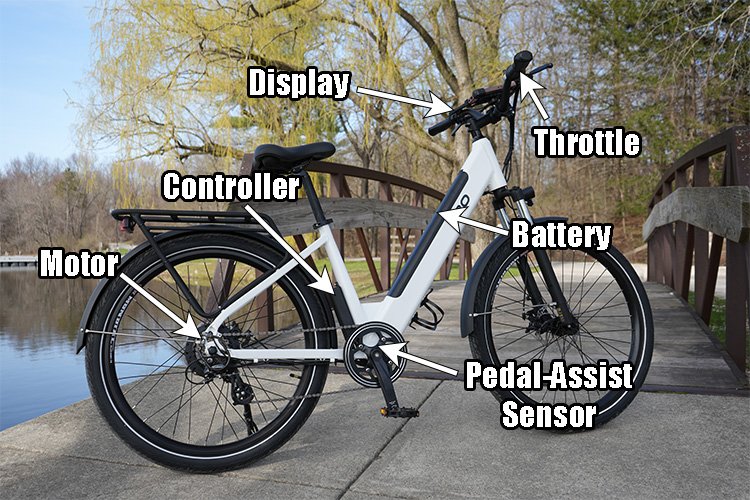
Motor
The heart of an electric bike lies in its motor – the powerhouse that provides the added push, making uphill climbs easier and long commutes more feasible.
E-bike motors come in various types, most notably hub motors and mid-drive motors. While hub motors are positioned in the center of either the front or rear wheel, mid-drive motors are strategically located at the bike’s crank and pedals.
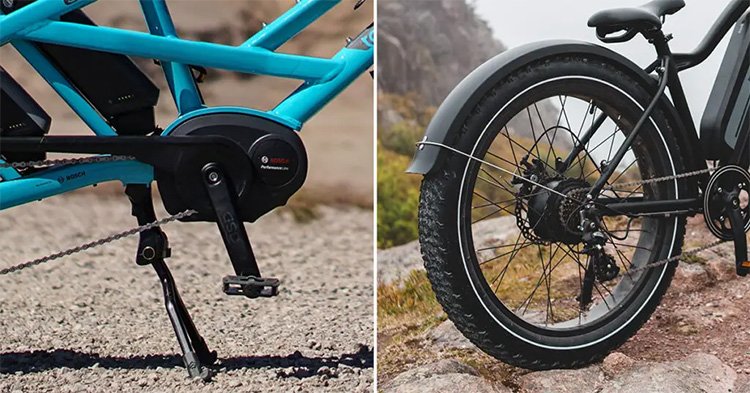
Each type has its benefits, depending on the rider’s preferences and the terrain. Factors like torque, power output, and positioning can dramatically influence the bike’s performance and feel.
As technology advances, these motors are becoming more efficient, quieter, and more integrated into the bike’s design.
But this is just scratching the surface. For a deep dive into the intricacies of e-bike motors and how they’re redefining the world of cycling, explore our detailed article on E-Bike Motors Explained.
Battery
Arguably the lifeline of any electric bike, the battery is what fuels the motor and gives an e-bike its “electric” essence.
These aren’t your typical AA batteries; e-bike batteries are sophisticated powerhouses designed to store and release energy efficiently.
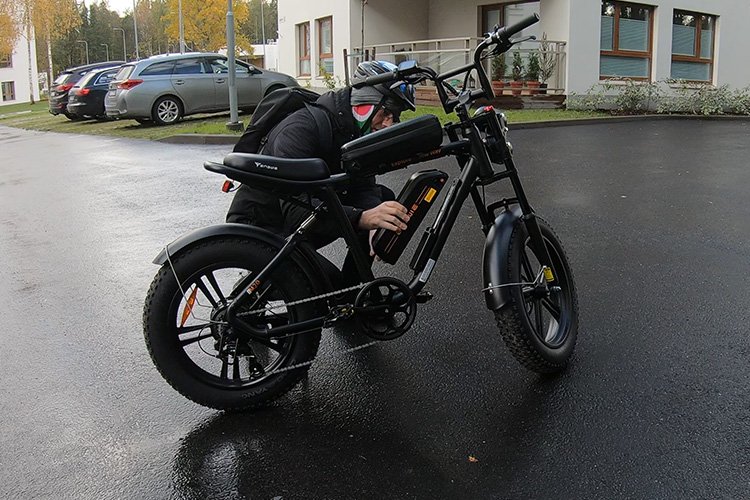
Typically made of lithium-ion cells, these batteries combine durability, longevity, and power in a compact form. Their placement, whether integrated into the frame or attached externally, can influence the bike’s weight distribution and aesthetics.
As the technology matures, we’re seeing batteries with faster charge times, longer lifespans, and greater energy densities, ensuring riders can go further on a single charge.
But, like all things e-bike, the intricacies of battery technology, capacity, and care are vast. To truly understand the pivotal role of batteries and how to get the best out of them, delve into our comprehensive guide on E-Bike Battery 101.
Controller
The controller serves as the bridge between the motor and the battery, orchestrating their harmonious collaboration. In essence, the controller dictates how power from the battery is delivered to the motor. It responds to inputs from the rider, whether that’s a twist of the throttle or a signal from a pedal-assist sensor, adjusting the motor’s output accordingly.
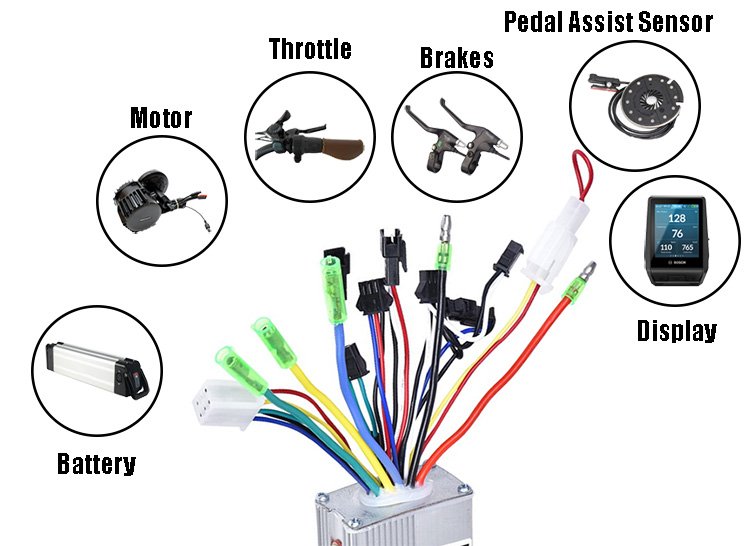
This delicate balancing act ensures smooth acceleration, efficient energy use, and responsive performance. Modern controllers often come with varying modes or levels of assistance, allowing riders to customize their e-bike experience from a gentle boost to a powerful push.
While often overlooked, the controller plays a pivotal role in the e-bike’s functionality and feel. Keen to understand more about the technicalities and nuances of e-bike controllers? Dive into our in-depth article on Electric Bike Controller Mechanics.
Pedal-Assist Sensor (PAS)
The magic of e-biking often lies in its intuitive nature, and pedal assist sensors are at the core of this seamless experience. These sensors determine when and how much electric assistance to provide based on the rider’s own pedaling effort. Broadly, there are two main types: cadence sensors and torque sensors.
Cadence sensors measure the speed at which you’re pedaling. When a certain cadence is detected, the sensor signals the motor to provide a predetermined level of assistance. It’s a bit like having a rhythmic co-pilot that boosts your ride when you hit a specific pedal pace.
Torque sensors, on the other hand, measure the actual force you apply to the pedals. The harder you pedal, the more assistance you receive, creating a more natural and responsive biking experience that mimics traditional cycling dynamics.
Both sensors play a crucial role in tailoring the e-bike experience to individual rider preferences and needs. For a closer look at how these sensors shape the way we ride, check out our thorough exploration of Pedal Assist Sensor Technology.
Optional Electric Bike Components
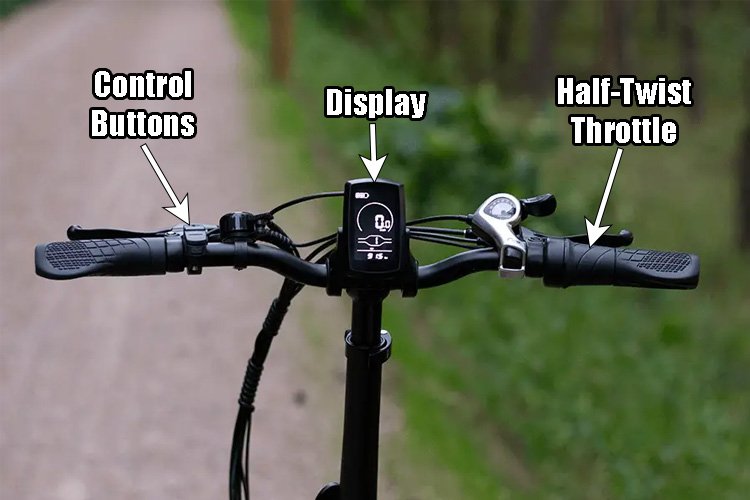
Display and Control Unit
An increasingly common feature on many e-bikes, the display and control unit acts as both the interface and the informative hub of the electric bicycle experience.
Conveniently mounted on the handlebars, it ensures riders can easily access and modify their e-bike settings. While not mandatory for all e-bikes, Class 3 e-bikes do require a speedometer, necessitating some form of display.
Some electric bike displays are quite basic and only allow riders to switch between different levels of pedal assistance. However, more advanced displays showcase metrics such as speed, battery level, trip distance, and even estimated range. Some of the top-tier models even boast features like GPS navigation, smartphone integration, and diagnostic tools.
Having a display and control unit greatly enhances the rider experience, offering a blend of control, information, and connectivity that takes e-biking to the next level.
Throttle
One of the defining features that sets certain e-bikes apart is the presence of a throttle. Acting similarly to a motorcycle or scooter, the throttle allows riders to access motor power directly, without the need to pedal. This means riders can effortlessly cruise without breaking a sweat or accelerate swiftly from a standstill.
However, it’s worth noting that not all e-bikes come equipped with a throttle. In fact, in the European market, the majority of e-bikes forgo this feature due to regulatory restrictions and a preference for pedal-assist systems.
Contrastingly, e-bikes in the U.S. market mostly come with a throttle. They typically come in two main styles: the half-twist throttle, which is akin to a motorcycle’s and is activated by twisting a portion of the handlebar, and the thumb throttle, which is pressed with the thumb for activation.
While the throttle offers a unique and often exhilarating riding experience, its presence or absence can greatly influence the feel and function of the e-bike, making it an essential consideration for potential buyers.
Conclusion
The world of e-bikes is a beautiful melding of tradition and innovation. It takes the best of conventional cycling and combines it with modern technology to offer riders an upgraded, more versatile mode of transportation.
Drawing from their traditional bicycle ancestors, e-bikes incorporate:
- Frame
- Wheels and Tires
- Brakes
- Gearing and Drivetrain
- Saddle and Seatpost
- Handlebars and Stem
- Pedals
- Suspension System
Yet, what truly sets e-bikes apart are the innovative components exclusive to them:
- E-Bike Motors
- E-Bike Batteries
- E-Bike Controller
- Pedal Assist Sensors (Cadence and Torque)
- Display and Control Unit
- Throttle
Understanding these components can enhance your e-biking experience, helping you make the most of your rides, whether it’s a casual jaunt around the city or a challenging trek up a mountain trail.
Embrace the future of cycling and the rich tapestry of components that come with it, and let every journey be a seamless blend of the old and the new.

The founder and the editor-in-chief of the Electric Wheelers blog. With a previous background in IT, sales, and video editing, he has now established himself as a micromobility expert.
He bought his first e-scooter over 5 years ago and since then has owned dozens of e-scooters and e-bikes. His deep understanding of the technical aspects, coupled with a keen eye for market trends, enables him to provide insightful and reliable content.
His commitment to promoting sustainable and efficient urban mobility solutions has made him a respected voice in the community of eco-friendly transportation enthusiasts.



